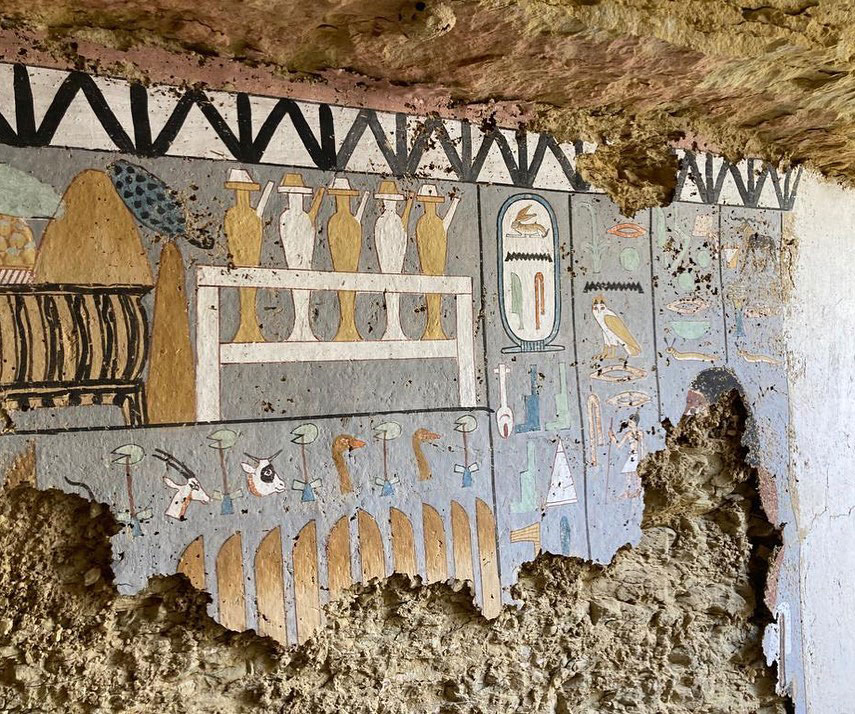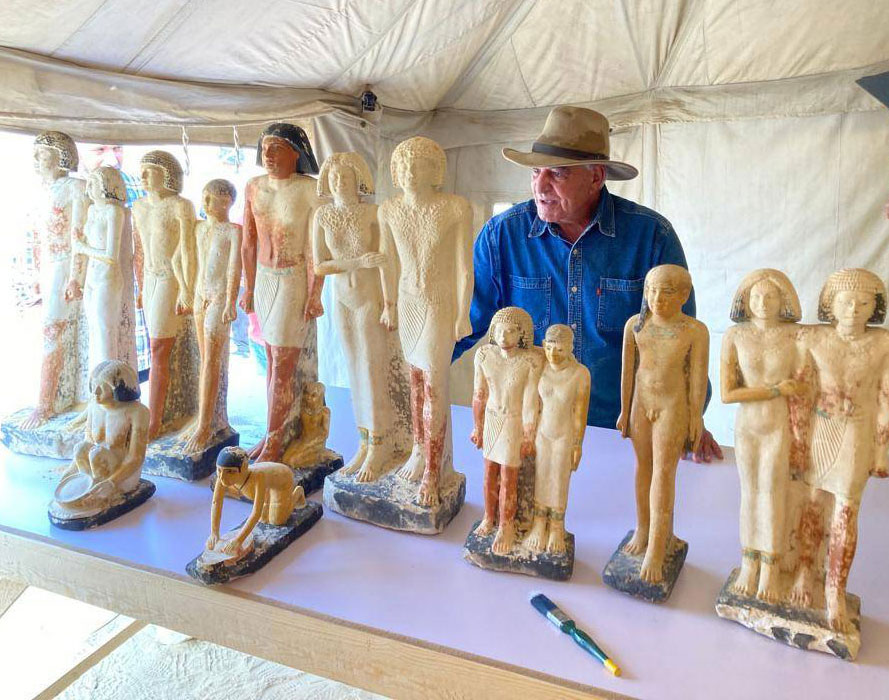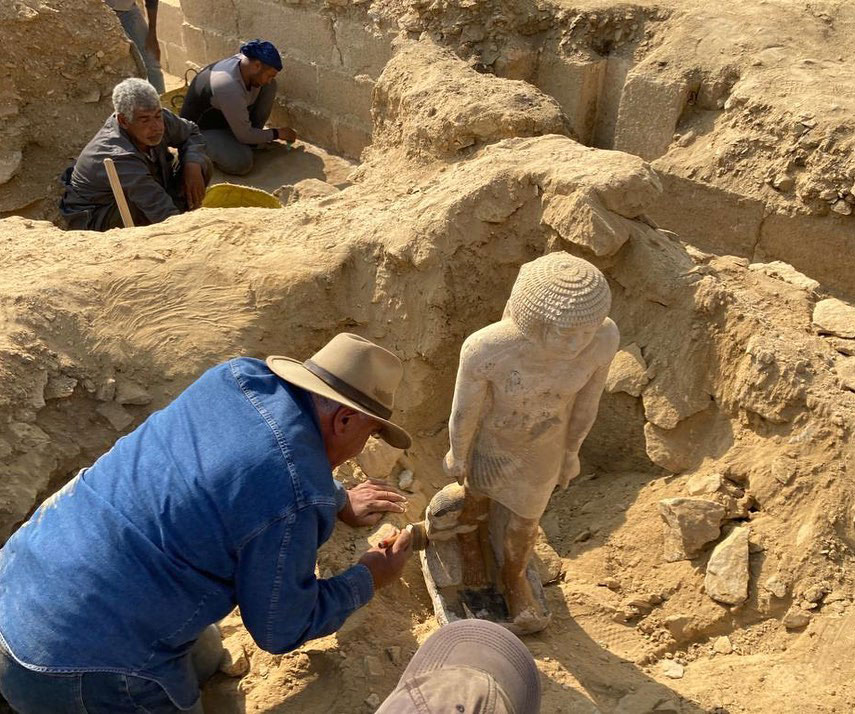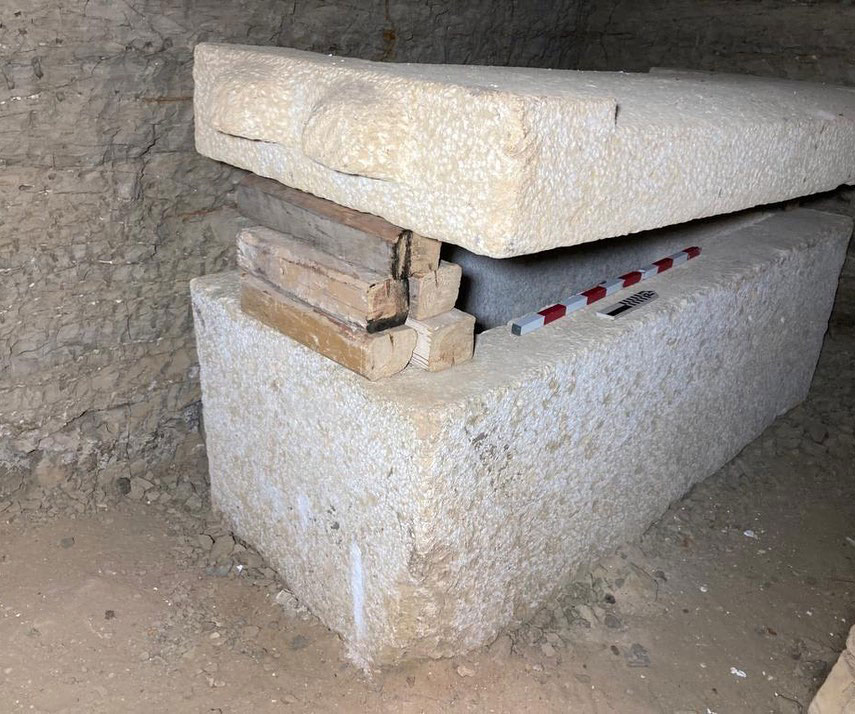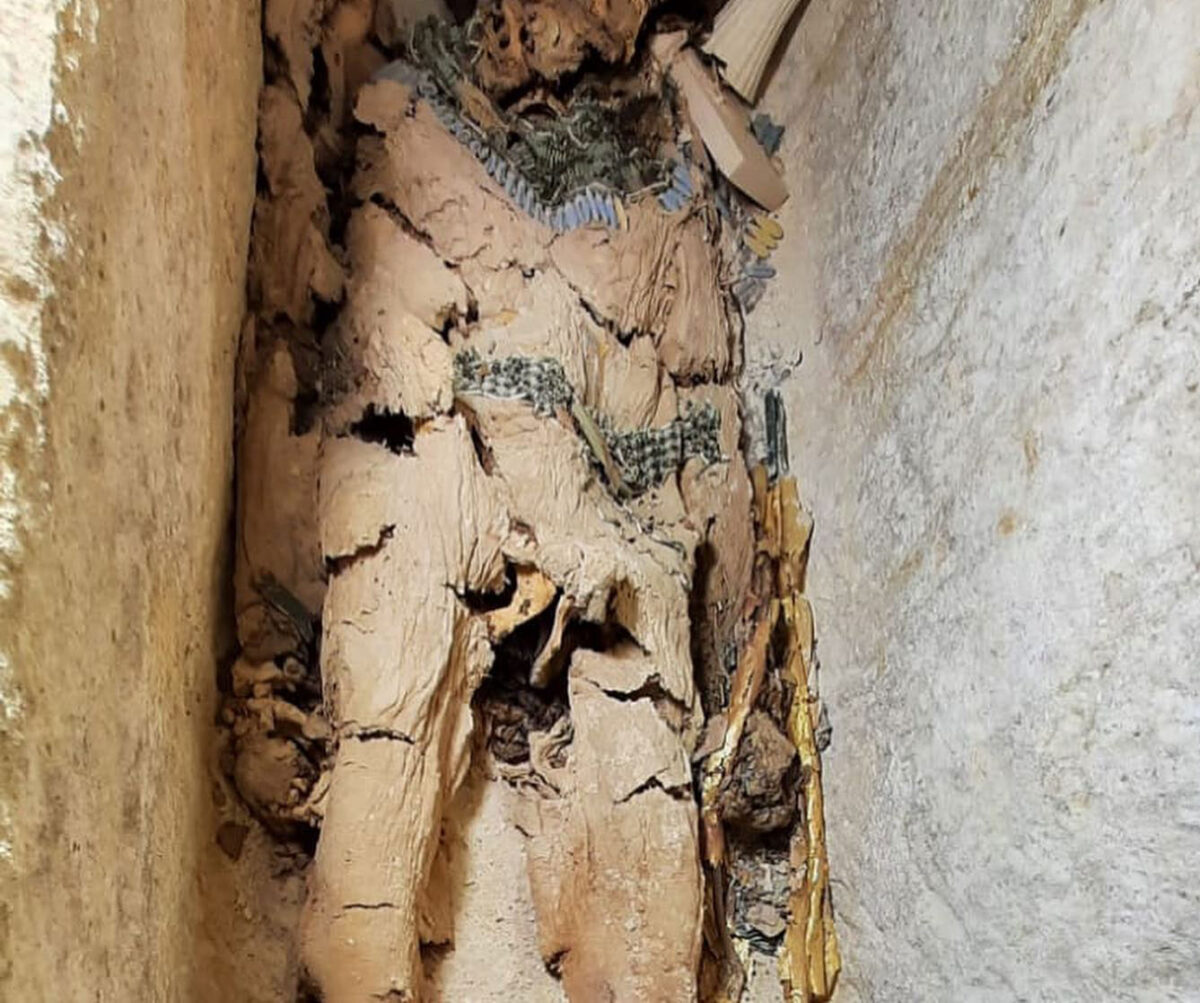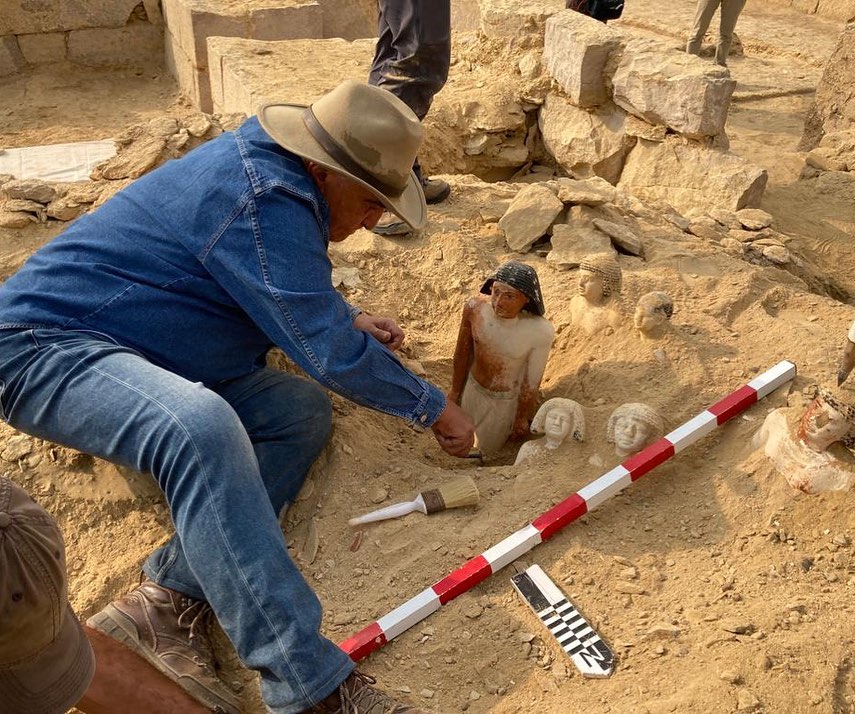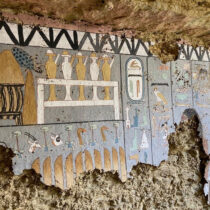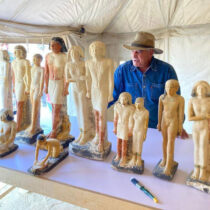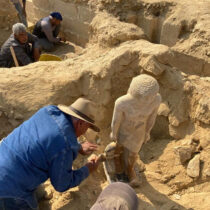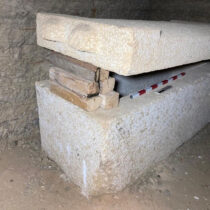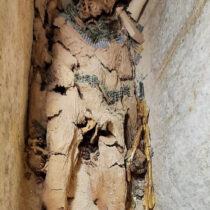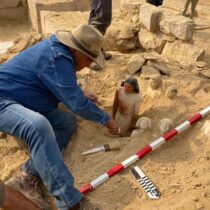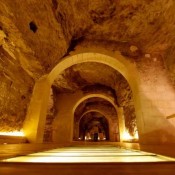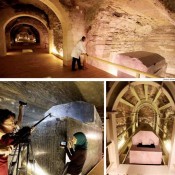New important finds from Saqqara have been announced by Dr. Zahi Hawass as the director of the Egyptian excavation team working with the Supreme Council of Antiquities (SCA) at the particular site of Gisr el-Mudir in the famous necropolis near Cairo. According to Dr. Hawass, the expedition has made important archaeological discoveries dating to 5th and 6th Dynasty (c. 2465 BCE-2150 BCE) of the Old Kingdom (c. 2650 BCE-2150 BCE).
Dr. Hawass stated that the expedition found a large cemetery containing a group of Old Kingdom tombs. The most important tomb belonged to Khnum-djed-ef, who was a priest at the pyramid complex of Unas. The second largest tomb belonged to Meri. Another tomb belonged to a priest at the pyramid complex of king Pepi I, probably called Messi, which contained nine beautiful statues.
Dr. Hawass also announced the discovery of a 15m shaft. A large rectangular limestone sarcophagus was found at the bottom of this shaft, belonging to a man called Heka-shepes. The sarcophagus was found intact and contained a mummy covered with gold leaf.
The team also found a shaft about 10m deep, which contained a group of beautiful wooden statues and three stone statues representing a person named Fetek. Beside these statues, it discovered an offering table and a stone sarcophagus that contained his mummy.
Additionally, the mission yielded many amulets, stone vessels, tools for daily life, statues of deities, and pottery.
